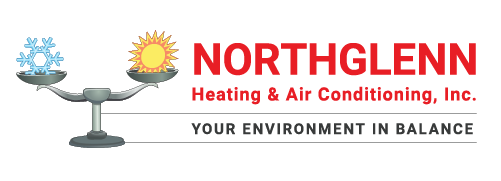As the weather starts to cool off, you might be concerned about how you’ll prepare your heating and cooling. After all, HVAC expenses frequently contribute a large portion of your monthly electric bill. To try and find ways to reduce costs, some owners look closely at their thermostat. Is there a setting they can use to increase efficiency?
The majority of thermostats come with a ‘Fan’ or ‘Fan On’ setting. But if the fan is running during a typical cycle, what can the fan setting provide for your HVAC system? This guide will help. We’ll walk through what exactly the fan setting is and how you can use it to cut costs over the summer or winter.
How Do I Access the Fan Setting on My Thermostat?
For the majority of thermostats, the fan setting signifies that the HVAC blower fan stays on. Some furnaces can operate at a low level in this setting, but for the most part heating or cooling isn’t being generated. The ‘Auto’ setting, on the other hand, will run the fan during a heating or cooling cycle and turn it off when the cycle is finished.
There are benefits and drawbacks to using the fan setting on your thermostat, and the ideal option {will|can|should]] depend on your distinct comfort preferences.
Advantages to using the Fan/On setting:
- You can keep the temperature throughout your home more uniform by allowing the fan to keep running.
- Indoor air quality can increase as steady airflow will keep passing airborne particles through the air filter.
- A smaller amount of start-stop cycles for the blower fan helps lengthen its life span. Since the air handler is often connected to the furnace, this means you might minimize the risk of needing furnace repair.
Disadvantages to utilizing the Fan/On setting:
- A constant fan can increase your energy expenses slightly.
- Nonstop airflow could clog your air filter soon, increasing the frequency you’ll need to replace it.
{Choosing Between|Should My Thermostat Be on|Which Setting for My Thermostat? Fan or Auto in Summer/Winter
Through the summer, warm air may persist in unfinished spaces including the attic or an attached garage. If you leave the fan on, your HVAC system can pull this warm air into the rest of your home, pushing the HVAC system to work harder to keep up with the set temperature. In serious heat, this may result in needing AC repair more often as wear and tear gets worse.
The reverse can happen over the winter. Cooler spaces such as a basement will hold onto cooler air, which may eventually flow into the rest of your home. Leaving the fan running will sometimes pump more cold air upward, increasing the amount of heating you need to stay warm.
If you’re still trying to determine if you should try the fan/on setting, remember that every home and family’s comfort needs are different. Leaving the HVAC system’s fan on might be ideal for you if:
Someone in your household has allergies. Allergies and other respiratory conditions can be stressful on the family. Leaving the fan on can help to enhance indoor air quality, helping your family breathe easier.
Your home experiences hot and cold spots. Many homes deal with persistent hot and cold spots that quickly shift to a temperature different from the rest of the house. The fan setting might help minimize these changes by constantly refreshing each room’s ventilation.
